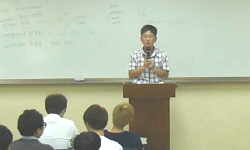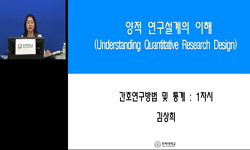Purpose: The purpose of this study was to develop a quantitative automated analysis system for two-dimensional videokymography (2D VKG) using the threshold segmentation method, and to analyze the vocal fold vibration characteristics of vocally healthy...
http://chineseinput.net/에서 pinyin(병음)방식으로 중국어를 변환할 수 있습니다.
변환된 중국어를 복사하여 사용하시면 됩니다.
- 中文 을 입력하시려면 zhongwen을 입력하시고 space를누르시면됩니다.
- 北京 을 입력하시려면 beijing을 입력하시고 space를 누르시면 됩니다.
Automated quantitative analysis of vocal fold vibration using two-dimensional scanning videokymography after transoral laser microsurgery
한글로보기https://www.riss.kr/link?id=A108777629
- 저자
- 발행기관
- 학술지명
- 권호사항
-
발행연도
2021
-
작성언어
-
- 주제어
-
KDC
510
-
자료형태
학술저널
-
수록면
37-47(11쪽)
- 제공처
-
0
상세조회 -
0
다운로드
부가정보
다국어 초록 (Multilingual Abstract)
Methods: 29 male patients who underwent CO2 transoral laser microsurgery and 10 vocally healthy male participated in the study. Quantitative analysis such as opening quotient (OQ), phase symmetry index (PSI), amplitude symmetry index (ASI) of 2D VKG images was performed using an automated analysis program in which glottal area extraction by the threshold segmentation method and edge detection using a manual plotting technique were mixed.
Results: Automatic analysis enabled accurate quantitative analysis in 76.9% (30/39) of the total image. The automated analysis corrected by the manual plotting technique on the sample showing gross error showed higher accuracy than the automatic analysis. The results of automated and automatic analysis were not statistically different in ASI, but there were differences in OQ and PSI. In addition, vocally healthy group and patients group showed statistical significance in all parameters (OQ, ASI, PSI).
Conclusions: The 2D VKG, which can evaluate the vibration of the entire vocal fold tissue in real time, can be usefully utilized as a laryngeal imaging technique that visualizes the structure and function of the vocal fold. Quantitative analysis using automated and automatic analysis can increase the clinical usability of 2D VKG.
Purpose: The purpose of this study was to develop a quantitative automated analysis system for two-dimensional videokymography (2D VKG) using the threshold segmentation method, and to analyze the vocal fold vibration characteristics of vocally healthy subjects and patients who underwent CO2 transoral laser microsurgery using this system, and to examine in accuracy differences between automatic and automated analysis methods.
Methods: 29 male patients who underwent CO2 transoral laser microsurgery and 10 vocally healthy male participated in the study. Quantitative analysis such as opening quotient (OQ), phase symmetry index (PSI), amplitude symmetry index (ASI) of 2D VKG images was performed using an automated analysis program in which glottal area extraction by the threshold segmentation method and edge detection using a manual plotting technique were mixed.
Results: Automatic analysis enabled accurate quantitative analysis in 76.9% (30/39) of the total image. The automated analysis corrected by the manual plotting technique on the sample showing gross error showed higher accuracy than the automatic analysis. The results of automated and automatic analysis were not statistically different in ASI, but there were differences in OQ and PSI. In addition, vocally healthy group and patients group showed statistical significance in all parameters (OQ, ASI, PSI).
Conclusions: The 2D VKG, which can evaluate the vibration of the entire vocal fold tissue in real time, can be usefully utilized as a laryngeal imaging technique that visualizes the structure and function of the vocal fold. Quantitative analysis using automated and automatic analysis can increase the clinical usability of 2D VKG.
목차 (Table of Contents)
- INTRODUCTION
- METHODS
- RESULTS
- DISCUSSION
- CONCLUSION
- INTRODUCTION
- METHODS
- RESULTS
- DISCUSSION
- CONCLUSION
동일학술지(권/호) 다른 논문
-
Study on parenting efficacy and parenting stress of mothers with Infants
- 한국언어재활사협회
- Hyun-Jin Chang
- 2021
-
Effect of mobile-based voice therapy on the voice quality of patients with dysphonia
- 한국언어재활사협회
- Geun-Hyo Kim
- 2021
-
Systematic review of the effectiveness of homoeopathy in the treatment of autism spectrum disorder
- 한국언어재활사협회
- Vibha Saxena
- 2021
-
Effects of exercise on tests measuring attention and executive function in younger and older adults
- 한국언어재활사협회
- Angela N. Burda
- 2021




 스콜라
스콜라






